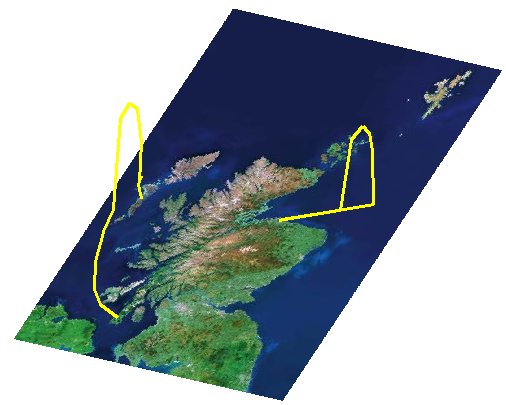

Aspirespace Rocket Engineering Society
Spaceplanes
Over the years, the number of aeronautical engineers within Aspirespace has reached better than evens, so we felt it was time that we embarked on studies of winged rocket vehicles.
Actually, the better reason is that we discovered that the only British launch-site large enough to handle our Aspire 2 space-shot vehicle was a sea-range, with the attendant problems of vehicle recovery. Also, it and the other large European ranges charge an absolute fortune for a day's hire; an order of magnitude more than the cost of the vehicle!
Dr. David Ashford of Bristol Spaceplanes has come to the conclusion that Britain really isn't suitable for the launching of traditional vertical-takeoff boosters because of our small island's lack of large empty areas of land. But as we're surrounded by sea, Britain is an ideal candidate for launching winged spacecraft out over our empty seas, then gliding them back to coastal airstrips after re-entry. This is why Britain’s forthcoming Spaceport will be based at the coast.

We thoroughly agree with David Ashford, and so we're continuing the amateur work on Waverider spaceplanes in the UK.
We have also conceived three suborbital one-person winged craft to get into space: Spacedare, Swift, and Transform. All three spaceplanes are single-seater to save weight (= cost) and to avoid competing with other people’s two-seater designs, and are designed to just get into space: 110 to 120 Km apogee (highest point of the flight).
With each successive ship: Spacedare, Swift, Transform, several parameters increase:
- The Mass ratio (a measure of the percentage of the vehicle mass that is rocket propellant) because each successive vehicle starts its rocket at a lower altitude.
- Increasing 'liftoff' mass.
- How hard the structure has to work (how light each square metre of structure is).
- The wing loading (the vehicle mass divided by its wing area) which affects landing airspeed and takeoff run.
- Piloting skill needed to fly and land.
- Vehicle compexity: engines, avionics, structure.
- Cost: each successive vehicle is more complex, is built from increasingly expensive materials, and 'weighs' more; has a greater amount of structure.
The waverider work and the three spaceplanes are detailed in the following pages. (Use the navigation bar).


